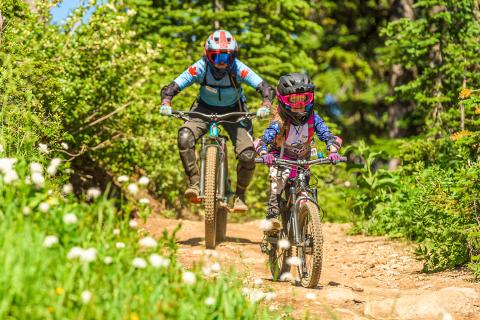Road Conditions
Getting to Big White is easy. Driving to Big White - Parking is Free!
**Please note: Parking on village roads is prohibited by law. Tickets and towing can occur at any time.
Big White Ski Resort is located 56 km (35 mi) southeast of Kelowna, the largest city in the Okanagan Valley. In the summer, it’s an easy 50-minute drive from Kelowna.
Directions from Kelowna: Follow Highway 33 for 32 km (20 mi) until you reach Big White Road. Turn onto Big White Road and follow it for another 24 km (15 mi) until you arrive in the main village, where you’ll find free parking at the Village Centre Mall. Hiking trails, scenic chairlift rides, washroom facilities and restaurants are all easily assessed from the Village Centre Mall. Please note there is no parking available at the base of the Bullet Express Chairlift. For road clearing, snow removal, inquiries and general feedback, please contact AIM Roads at: 1.866.222.4204
Check out the latest Road Conditions on DriveBC.com
Webcams - Courtesy of DriveBC
McCulloch - Hwy 33, 41 km southeast of Kelowna, just south of Big White turnoff, looking north. (elevation: 1200 metres)
Tips for the Road
Please beware of wildlife on the road! Cows and deer are regularly spotted on Big White road during the summer; be sure to also keep an eye out for elk, moose and bears.
Speed limits are for dry conditions. Weather in the alpine can change quickly to become wet or even snowy. Keep in mind that it can take about three times as long, or as far, to stop in wet conditions than it does on dry pavement. Keep at least three times normal distance between you and the car in front.
Be extra cautious in danger zones: intersections, lane changes, turns, stops.
Be sure to have a full tank of gas before coming up to the mountain. There is no petrol available at Big White. The last petrol station before Big White is located on Highway 33 in Black Mountain.
- Be extra cautious in danger zones: intersections, lane changes, turns, stops.
- In snow, tires barely grab the road, so accelerate, turn and stop gently.
- Accelerate and brake on straight-aways where possible, gently in either case.
- If ice and bare patches alternate, brake in the bare spots and coast over the ice. Apply that same rationale to bridges, which freeze before roadways, and try to reach “bridge speed” before you get there.
- Use your lights on low beam and if you can’t see the edge of the road, use roadside reflectors to guide you.
- When descending a hill, your maximum safe speed should be at the crest.
- Four-wheel-drive owners: Even though your system is great for moving around in the snow, it doesn’t help you slow down! Word to the wise: slow down safely!
- A word about snowplow drivers. They’re up when you’re asleep, work in conditions you avoid in order to clear your way to the slopes. So be kind, give the plow plenty of room and keep your beams low. Above all, be like a tortoise and practice patience.
For up-to-date highway conditions, please see the BC Highways Ministry road report
WHEN DO YOU NEED WINTER TIRES OR SNOW CHAINS?
If you plan to travel British Columbia roadways when wintry conditions are a possibility, you should carry chains and be prepared to install them if needed. When you come to a posted sign on the highway stating “Winter Tires or Chains Are Required Beyond This Point”, you must be ready to install chains or have proper winter tread tires before proceeding.
Should you go beyond that point without the proper equipment, you may be subject to a fine. If road conditions worsen, be sure to install your chains before you reach an uphill grade.
Pay attention to whether approaching vehicles are using chains or having difficulty. If you have any doubts, chain up before proceeding.
When you encounter a sign or flashing amber lights with a message that indicates vehicles over a certain posted GVW (gross vehicle weight) must chain up, then carrying the chains is no longer sufficient.
The tire chains MUST be installed at that point. Failure to do so may result in a fine or other enforcement action. Proceeding without the proper equipment installed could also cause you to lose control of your vehicle, endangering your own life and the lives of others.
Winter Tires Transport Canada recommends the use of a winter tire that has been rated for severe snow conditions. These tires have a pictograph of a mountain peak with snowflakes on the side. In section 208 (1) of B.C.’s Motor Vehicle Act there is a more specific definition of “winter tire.” Tires marked with the pictograph of a peaked mountain with a snowflake meet specific snow traction performance requirements, and have been designed specifically for use in severe snow conditions.





